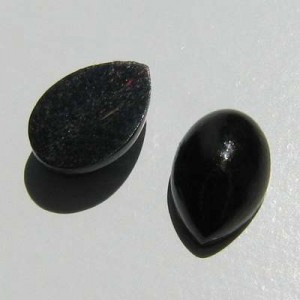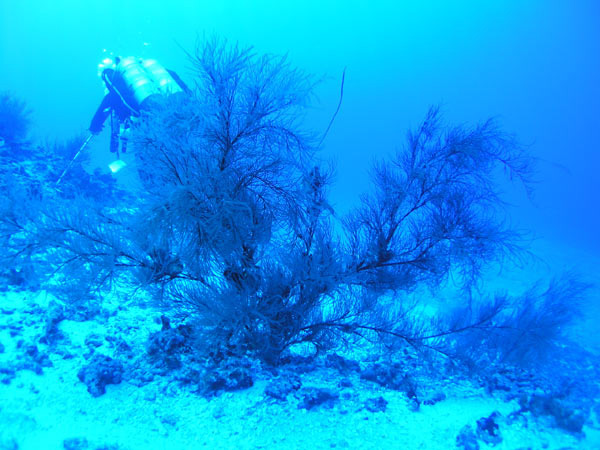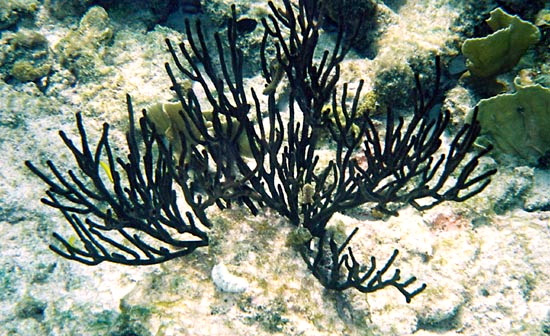Black coral gemstone; photo by Travel to Paradise / Black Coral: Hawaii state gem (all rights reserved; used by permission).
Official State Gem of Hawai'i
Hawaii designated black coral as the official state gem in 1987. All State Gems - All Aquatic Life Symbols
Black corals are animals (Family Antipathidae) that live in colonies up to 6 feet high (1.8 meters), though individual polyps may be less than .04 inches (1 mm) in diameter. Polyps are cylindrical with six non-retractable tentacles armed with stinging cells.
Named for their stiff black or brownish skeleton, black coral is related to sea anemones and stony corals. Sometimes called “little thorn corals” because of tiny spines found on the surface of the skeleton, black coral is often seen in jewelry. The living coral may be black, red, orange, brown, green, yellow, or white (depending on the species).
Found in all oceans of the world, more than 150 species of black corals have been described (14 of these from Hawaii). Some black coral grows as a single, spiral coil, while others have a fan shape or elaborate tree-like branches. Black corals are carnivores firmly attached to the seafloor feeding on animal plankton swept over the polyps by ocean currents.
On Hawaii’s deep reef slopes black corals host unique communities of marine life. Tree-like black coral colonies create a habitat for crustaceans, bivalves, and fish. Different corals may host different combinations of species. Some dependent partners live only on the black coral.
Black coral has been harvested for centuries as a charm and medicine. It was believed black coral had the power to ward off evil and injury (the Latin word antipathies means “against suffering”). Early Hawaiians ground black coral branches into a medicinal powder.
Modern collecting pressure and the absence of regulations may impact the slow-growing black corals and the marine communities that depend on them. Waikiki Aquarium features several species of black corals at their special exhibit: "Black Corals: Life on the Deep Reef."



